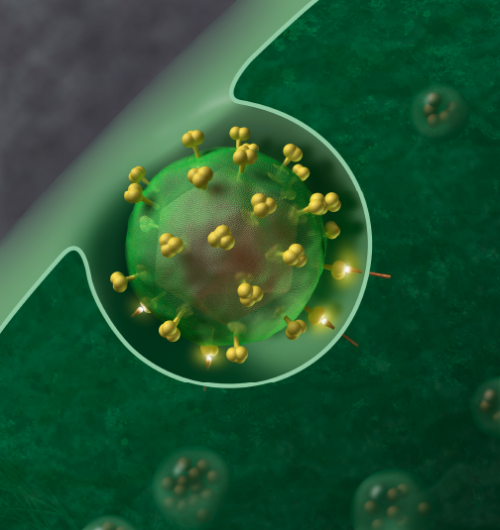Molecules seen binding to HIV-1's protective capsule, blocking infection

Imagine a suitcase on a bumpy ride. With enough jostling it opens, spilling clothes everywhere. Similarly awkward, the suitcase locks may jam and not open at the destination.
This analogy illustrates the importance of the protective capsule, called the capsid, which surrounds the HIV-1 genome. (HIV is short for human immunodeficiency virus.) The capsid has to disassemble once the virus enters the cell, releasing its disease-causing cargo at precisely the right time and place.
"It's still a matter of debate at what point the capsid falls apart in HIV-1 infection of cells," said Dmitri Ivanov, Ph.D., assistant professor of biochemistry in the School of Medicine at The University of Texas Health Science Center at San Antonio. Dr. Ivanov is a senior author on a study, published Dec. 15 in Proceedings of the National Academy of Sciences, that offers clues about HIV-1 capsid disassembly.
The paper shows how an HIV-1 inhibitor called PF74 and a host protein called CPSF6 bind to a small pocket on the surface of the capsid and prevent it from disassembling. The suitcase, if you will, is locked. Viral information is kept inside.
"We think that this process can be targeted for therapeutic purposes in HIV-1 infections," Dr. Ivanov said.
In part of the study, researchers used X-ray crystallography at the UT Health Science Center to visualize the three-dimensional structure of the CPSF6 protein bound to the HIV-1 capsid.
"Seeing molecules in 3-D is illuminating; it tells us something about their function," Dr. Ivanov said. "We now know how PF74 and CPSF6 interact with the adjacent building blocks of the HIV-1 capsid, thus stabilizing the entire capsid structure. It tells us that these molecules bind to the capsid before disassembly, blocking viral replication."
More information: Structural basis of HIV-1 capsid recognition by PF74 and CPSF6, PNAS, Akash Bhattacharya, 18625–18630, DOI: 10.1073/pnas.1419945112



















